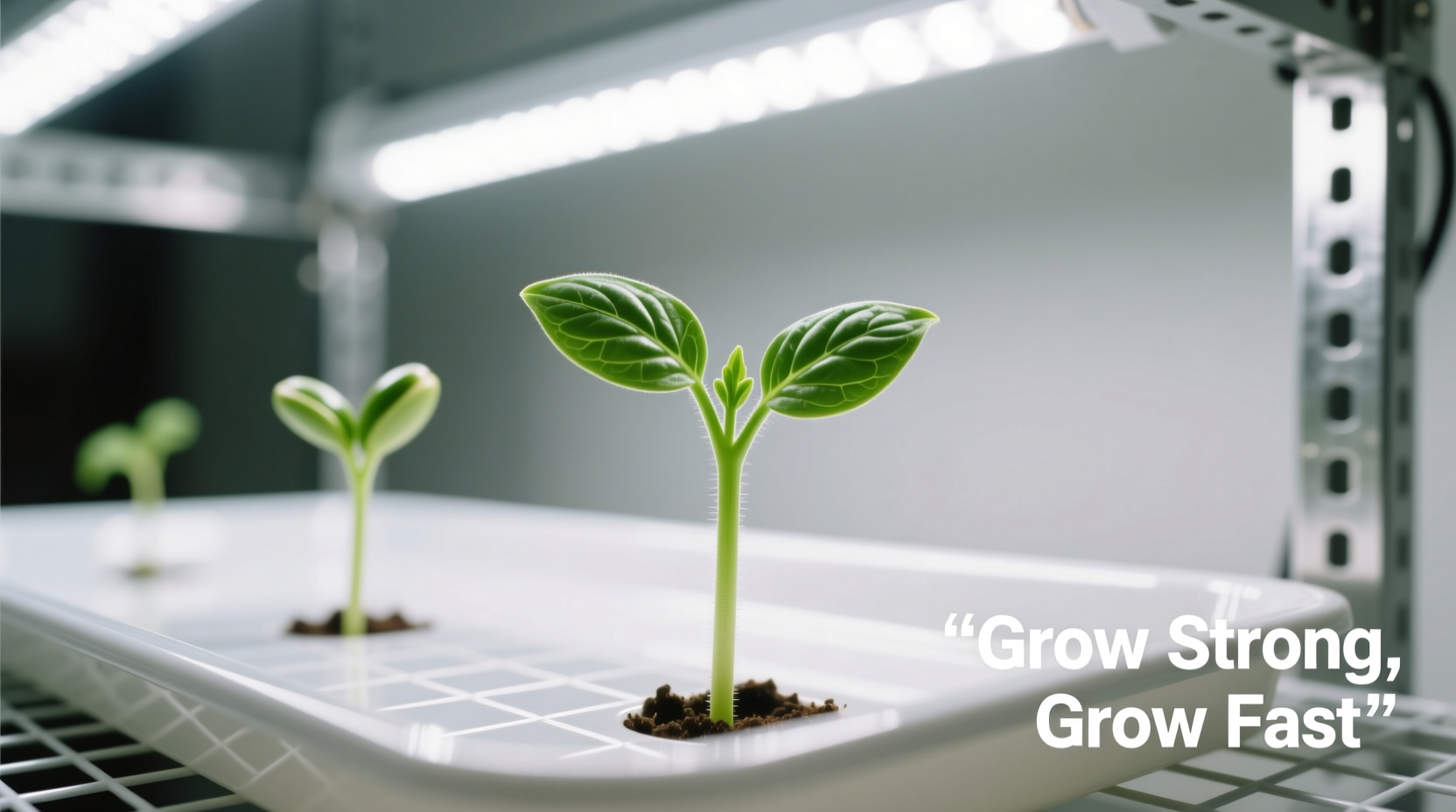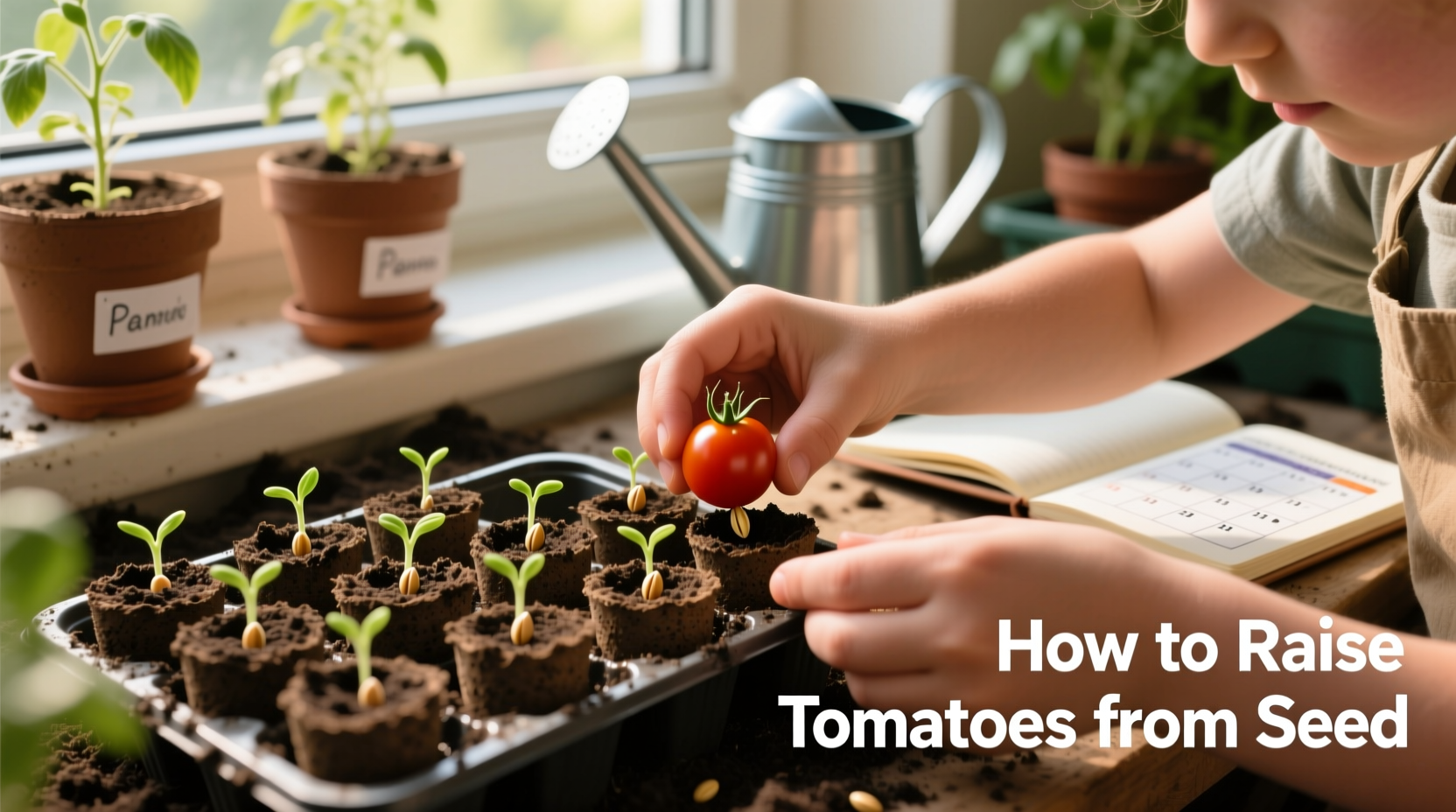There's nothing quite like harvesting sun-warmed tomatoes you've nurtured from tiny seeds. While many gardeners rely on store-bought seedlings, starting tomatoes from seed gives you access to hundreds of unique varieties and builds a deeper connection to your garden. The process takes patience and attention to detail, but the rewards far outweigh the effort.
Why Grow Tomatoes from Seed Instead of Buying Plants?
When you start tomatoes from seed, you gain access to heirloom and specialty varieties unavailable at nurseries. According to the USDA National Agricultural Library, home gardeners who start their own seeds can choose from over 3,000 tomato varieties compared to the 10-15 typically available as seedlings. This diversity includes disease-resistant strains, unique colors, and flavors tailored to specific growing conditions.
Timing Your Tomato Seed Starting Project
Getting the timing right separates successful tomato growers from frustrated gardeners. The critical factor is your local last frost date. Most tomato varieties require 6-8 weeks of indoor growth before transplanting.
| USDA Hardiness Zone | Last Frost Date | Seed Starting Date |
|---|---|---|
| 3-4 | May 15-June 1 | March 15-31 |
| 5-6 | April 15-May 15 | February 15-March 15 |
| 7-8 | March 15-April 15 | January 15-February 15 |
| 9-11 | No frost | October-December |
This planting schedule aligns with recommendations from the University of Minnesota Extension, which emphasizes that starting seeds too early leads to leggy, stressed plants while starting too late sacrifices valuable growing season.
Essential Supplies for Successful Tomato Seed Starting
Before planting, gather these key items:
- Seed starting mix - Not regular potting soil, which compacts too easily
- Containers - 3-4" pots with drainage holes work best
- Growing lights - Seedlings need 14-16 hours of bright light daily
- Thermometer - Ideal germination temperature is 70-80°F (21-27°C)
- Watering can with fine rose attachment for gentle watering

Step-by-Step Tomato Seed Starting Process
1. Prepare Your Planting Medium
Mix seed starting mix with water until it reaches the consistency of a damp sponge. Fill containers leaving ½ inch space at the top. Gently firm the mix without compacting it.
2. Plant Your Seeds Properly
Place 2-3 seeds per container ¼ inch deep. Cover lightly with mix and mist with water. Tomatoes need darkness to germinate, so cover containers with opaque material until sprouts appear.
3. Maintain Optimal Germination Conditions
Keep soil consistently moist (not soggy) at 75-80°F (24-27°C). Most tomato seeds germinate within 5-10 days. The Oregon State University Extension notes that temperatures below 60°F (15°C) significantly delay germination and increase disease risk.
4. Provide Adequate Light Immediately After Sprouting
Once seedlings emerge, provide 14-16 hours of bright light daily. Position grow lights 2-3 inches above plants, raising them as plants grow. Without sufficient light, seedlings become leggy and weak within days.
5. Thin to the Strongest Seedling
When true leaves appear (the second set of leaves), thin to one plant per container by cutting weaker seedlings at soil level. Never pull seedlings, as this damages roots of remaining plants.
Tomato Seedling Care Timeline
Follow this progression to develop strong plants ready for garden transplantation:
- Weeks 1-2: Focus on light and moisture control. Water when top inch of soil feels dry.
- Week 3: Begin weekly applications of half-strength balanced fertilizer.
- Week 4: Start gentle air circulation with a small fan to strengthen stems.
- Week 5: Begin hardening off process by introducing outdoor conditions gradually.
- Week 6-8: Transplant to garden after last frost date, burying stem up to first true leaves.
Avoiding Common Tomato Seed Starting Mistakes
Based on surveys of home gardeners conducted by the University of Illinois Extension, these errors cause the most seedling failures:
- Overwatering - Leads to damping-off disease (45% of failures)
- Inadequate light - Causes weak, stretched plants (30% of failures)
- Starting too early - Results in root-bound, stressed plants (15% of failures)
- Poor air circulation - Increases disease susceptibility (10% of failures)
Best Tomato Varieties for Beginners Starting from Seed
When selecting seeds, consider these reliable performers that excel when grown from seed:
- Roma - Determinate variety ideal for containers and sauces
- Early Girl - Produces first fruits in just 50 days after transplanting
- Cherokee Purple - Heirloom with excellent flavor and disease resistance
- Stupice - Cold-tolerant variety perfect for short growing seasons
The University of Wisconsin Extension recommends starting with disease-resistant varieties labeled with codes like "VFN" (verticillium, fusarium, nematode resistance) for your first season.
Transplanting Your Seedlings to the Garden
Before moving plants outdoors permanently, complete the hardening-off process:
- Start with 1-2 hours of morning sun in a sheltered location
- Gradually increase exposure by 1-2 hours daily over 7-10 days
- Bring plants indoors if temperatures drop below 45°F (7°C)
- After hardening, plant deeply, burying the stem up to the first set of true leaves
When planting, add crushed eggshells to the bottom of each hole for calcium, which helps prevent blossom end rot. Water thoroughly after planting and apply 2-3 inches of organic mulch to conserve moisture.
Troubleshooting Seed Starting Problems
Leggy, Stretched Seedlings
Cause: Insufficient light or excessive heat
Solution: Move lights closer (1-2 inches above plants) or increase daylight hours. Lower temperatures to 65-70°F (18-21°C) after germination.
Damping Off Disease
Cause: Fungal pathogens thriving in cool, wet conditions
Solution: Improve air circulation, avoid overwatering, and use sterile seed starting mix. A light sprinkle of cinnamon on the soil surface can help prevent fungal growth.
Yellowing Leaves
Cause: Nutrient deficiency or overwatering
Solution: Begin regular fertilizing with balanced liquid fertilizer at half-strength. Ensure proper drainage and allow soil to dry slightly between waterings.











 浙公网安备
33010002000092号
浙公网安备
33010002000092号 浙B2-20120091-4
浙B2-20120091-4